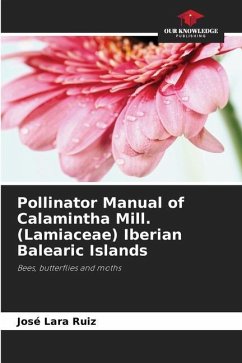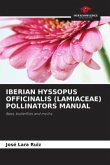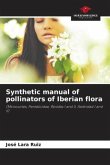The type of insects attracted depends on the length of the corolline tube of the plant species, in whose lower part the nectar secreted at the base of the ovary is hidden, forcing the insect to introduce its entire proboscis and part of its head so that the back of its mesothorax rubs against the anthers and the insect is impregnated with pollen by sucking this sugary juice, pollen that it will deposit when it rubs against the viscous stigma on the visit to the next flower in search of such appreciated food. Thus, species with short corolla tubes (3-4 mm): Mentha spp. and Lycopus europaeus are visited by small-sized dipterans and solitary bees (Shmida & Dukas, 1990), species with intermediate length corolla tubes (5-7 mm): Thymus ssp, are visited by a greater diversity of species: solitary bees, bumblebees, diurnal butterflies and dipterans, while species with long corolla tubes (Lavandula, Salvia, Lamium, Galeopsis, Ballota, Teucrium and Ajuga) are preferentially visited by solitary bees with long trunks, being exceptional the visits of butterflies and dipterans.
Bitte wählen Sie Ihr Anliegen aus.
Rechnungen
Retourenschein anfordern
Bestellstatus
Storno



